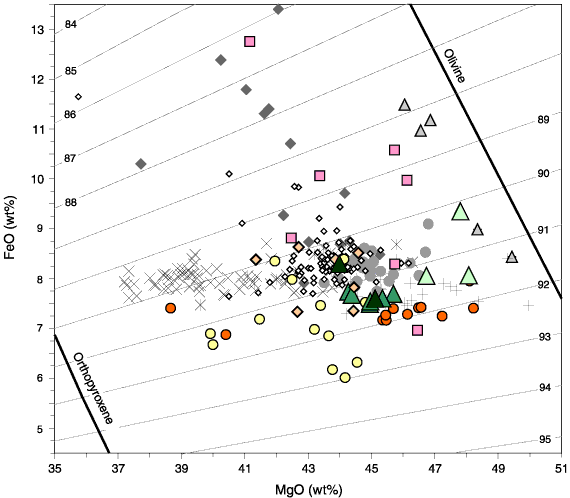
Figure F50. FeO vs. MgO whole-rock concentrations of Site 1274 peridotites (green triangle = harzburgite, light green triangles = dunite, dark green triangles = harzburgite mud). Published data and data from previous Leg 209 peridotites are shown for comparison: yellow circles = Site 1268, orange circles = Site 1272, pink diamonds = Site 1270, pink squares = Site 1271, open circles = Mid-Atlantic Ridge peridotites from Leg 109 Site 670 and Leg 153 Site 920. Published data are also shown for comparison: open diamonds = Mid-Atlantic Ridge peridotites from Leg 109 Site 670 (Hebert et al., 1990) and Leg 153 Site 920 (Casey, 1997). Other symbols: * = Southwest Indian Ridge (Snow and Dick, 1995), + = Izu-Bonin Mariana forearc peridotites (Parkinson and Pearce, 1998), diamond = East Pacific Rise peridotites (Niu and Hekinian, 1997), X = Western Alps orogenic lherzolites and ophiolites (Bodinier, 1988; Rampone et al., 1996), circle = Oman ophiolite harzburgites (Godard et al., 2000); triangle = Oman ophiolite mantle transition zone dunites (Godard et al., 2000). Whole-rock compositions are presented on a volatile-free basis assuming all Fe is FeO. The solid black lines show olivine and orthopyroxene composition as a function of Fe/Mg. Fine gray lines show constant values of Mg# (Mg# = 100 x molar Mg/[Mg + Fetotal]). Fetotal = total Fe as
FeO.



![]()